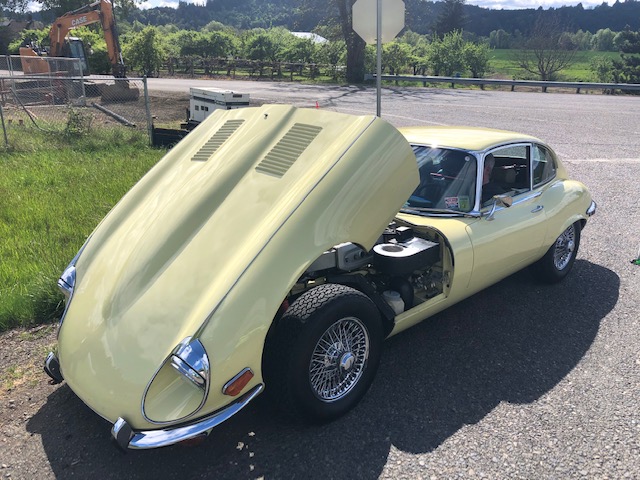
One moment, the 1971 Jaguar V12 coupe was hustling along at 70 mph on Highway 26, heading back to Portland after a satisfying lunch of fresh-caught rockfish at the South Bay Wild Fish House in Astoria, OR.
The next, it was sitting silently, hood-up, by the side of the road.
The Jag had been performing brilliantly. The 5.3-liter engine was spinning like a turbine. The a/c was blowing ice-cold. With the fresh OEM rubber suspension bushings, the car tackled the turns with gusto. The more power I applied the happier the car was.
My second foray into the world of classic cars with automatic transmissions, the Jag soon became my favorite. A pure analog car, the interior is festooned with gauges and switches, some labeled, some not.
I had always viewed the V12 coupes as the bloated “Miss Piggys” of the Jag world, with their flared fenders and tall windshield.
But owning one soon taught me that while the earlier 6-cylinder E-types were pure sports cars, the V12s were comfortable, sophisticated cruisers.
Just 30 miles from home, as I passed NW Sellars Road on a long uphill stretch, the Jag lost all power.
Sadly, this was not my first experience with this happening in a classic car. Alfa Romeo Owner’s Club President Cindy Banzer’s eyes still get large when she recounts the time we were driving our 1958 Alfa Giulietta Spider Veloce (our race car with just enough equipment to make it street legal) on the California Mille and the throttle jammed wide open on a twisty mountain road. I was hell-bent-for- leather chasing Michael Levanthol in his 1953 Ferrari 340MM Vignale Spyder.
I wasn’t going to let him get away. I was able to reach behind me and use the battery cut-off switch to modulate the speed of the car. It was definitely an E ticket ride.
When I felt the output of the Jag engine go from 242 hp to zero, like a carrier plane at Midway looking for the Enterprise, I steered for the nearest part of the road with a wide shoulder.
I landed safely off the highway. The electrical system was on sabbatical. Turning the key brought out the little cricket clicks as the solenoid pretended to engage.
For some unknown reason, the battery had been completely drained. The Jag has a voltmeter which I had not been paying attention to. In fact, I don’t understand the point of a gauge that tells you when your battery is dead. At least with an ammeter you can see if you are charging or not. But I’m sure wiser collectors can fill me in on this.
A quick call to SCM Tour Director and car wrangler Neil d’Autremont and a solution was in hand. “Send me a picture of the battery, I’ll grab a spare and be there in 30 minutes.” The word gratitude hardly reflects my feelings of appreciation.
He showed up and declared the battery in the car to be a POS (that’s car talk). He dropped in the new one and we were once again on our way.
Neil is going to buy a new high-quality battery and then we will send the car to Consolidated Autoworks to have the charging system inspected.
Our trip had only been interrupted by an hour. While we were inconvenienced, the engine shutdown happened in daylight, in good weather, and in a place where I was safe pulling over.
Further, this points out the value of the SCM Mantra, “Drive your cars.” Far better to have this happen now than on SCM 1000 Day One, in the High Desert with no cell coverage, 100 miles out from Bend, OR.
With Neil’s help, we were able to triumph over the machinations of Lucas, the Prince of No Horsepower. The Jag is resting at home, and ready for those last few tweaks before the July tour.
As the Bard said, “All’s Well That Ends Well.”
-

Fresh caught rockfish -
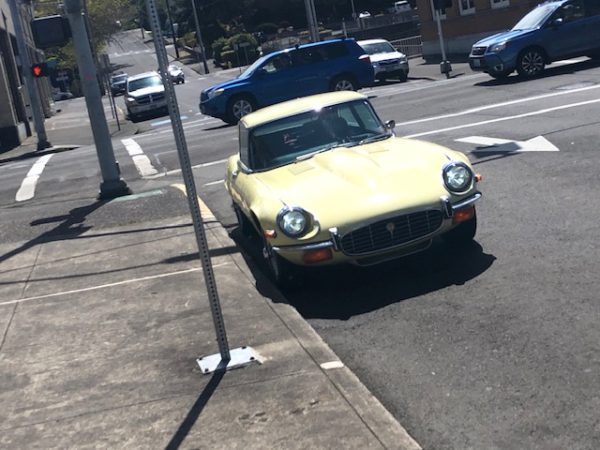
Note LED headlights -
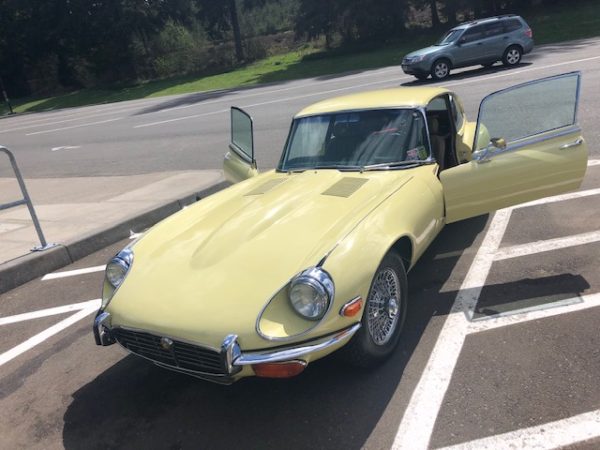
Running perfectly -
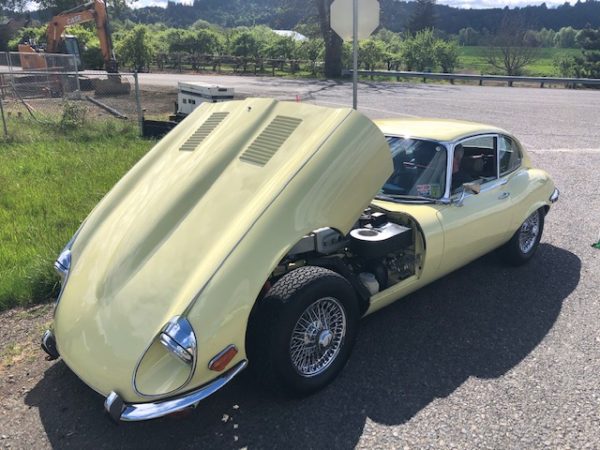
Sadly, a familiar pose -
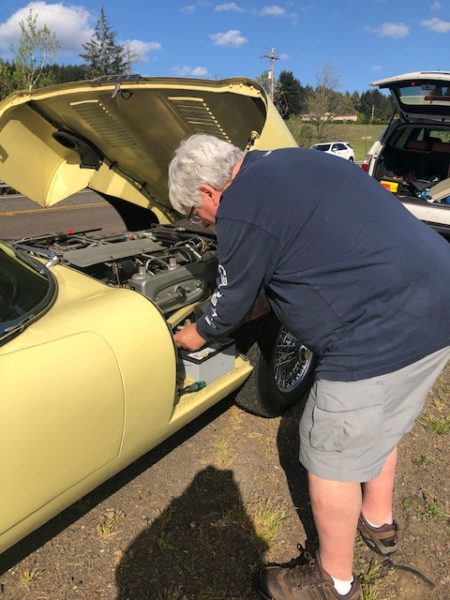
Neil D’Autremont to the rescue
Ammeters display moments, voltments show trends and both deserve frequent attention as an integral part of your instrument scan. Normal operating voltages range from 13.8vdc to 14.2vdc so when its outside those numbers, a more thorough examination of the regulator, alternator and battery cables/clamps should be done ASAP.
You are a lucky man Mister Keith, both for experiencing a daylight failure and for having Field Marshal D’Autremont on your team!
This reminds me of my experience with a 1959 Jaguar XK-150 drophead. I bought the car from a high school classmate, I think for $1,000, (in the late 1960s), and foolishly decided to surprise my parents by picking them up from the airport in the Jaguar. On the way there, of course, the car died in the middle of the road. No immediate solution, tow truck called, went to airport in a taxi. The cause? Apparently a screw in the distributor had worked loose and disabled the ignition system. Of course, I later regretted selling this beautiful red Jaguar, which is probably worth a mint today.
Keith, Maybe this is a good way to reach you. Since I re-uped my subscription late last November I have called your office 3 times to complain I was getting 2 copies of your great magazine, one to my home address and one to my office. I had put very clear directions on the renewal to please stop sending my copy to my office, to finish out the existing subscription to my home address and to continue the renewal mailings to my home address, no more copies to my office. Can you please make that happen.
So what was up with it? (Obvs curse of Joe Lucas/leaking wire smoke but please be more specific). I’m feeling very smug at the moment having resurrected a dead starter motor on a 15-year-old Citroen with a £14 brush pack.
Further reinforces: “All mechanical issues are electrical!”
Grace, space & pace. Better than the XK150’s I owned. Batteries in the wings behind the front wheels. No fun.
I recently bought a Miata, killed 2 batteries by leaving the fob in the console. Dumb me. Dumb fob. We leave the fob in our Escape w/o that, so Mazda had that quirk.
I had a 1981 12 cyl (Pre-HE which came out in 82) XJ12 Sedan. It consumed alternators and head gaskets with alarming regularity…The alternator problem was solved by substituting a one-wire 80A GM unit…with some heat shielding, The head gasket problem was corrected with a HUGE custom built Aluminum radiator that was more suited to California summers than the marginal original equipment, and a revised gasket set from Dolphin Coventry. You REALLY had to want one of these cars to drive it regularly. I traded it, with pleasure to Rich Ott when his shop was in SF for a nice Alfa 2600 Bertone Coupe. I think that was my last of a half-dozen Jaguars, finally got that out of my system. These cars were very cheap at the time (and still) for what they were…but they deserved the Lucas and Roots group/Leyland stigmas attributed to them. I applaud your persistence, but predict it reaching a practical limit…since I know you are an Alfa guy at heart, As am I.
Ah yes, a return to The Dark Ages brought to you by Lucas and Smith. They should have supplied their speed dial number for your cell phone. Alas, Sir Neal was able to swoop in to the rescue. Kudos.